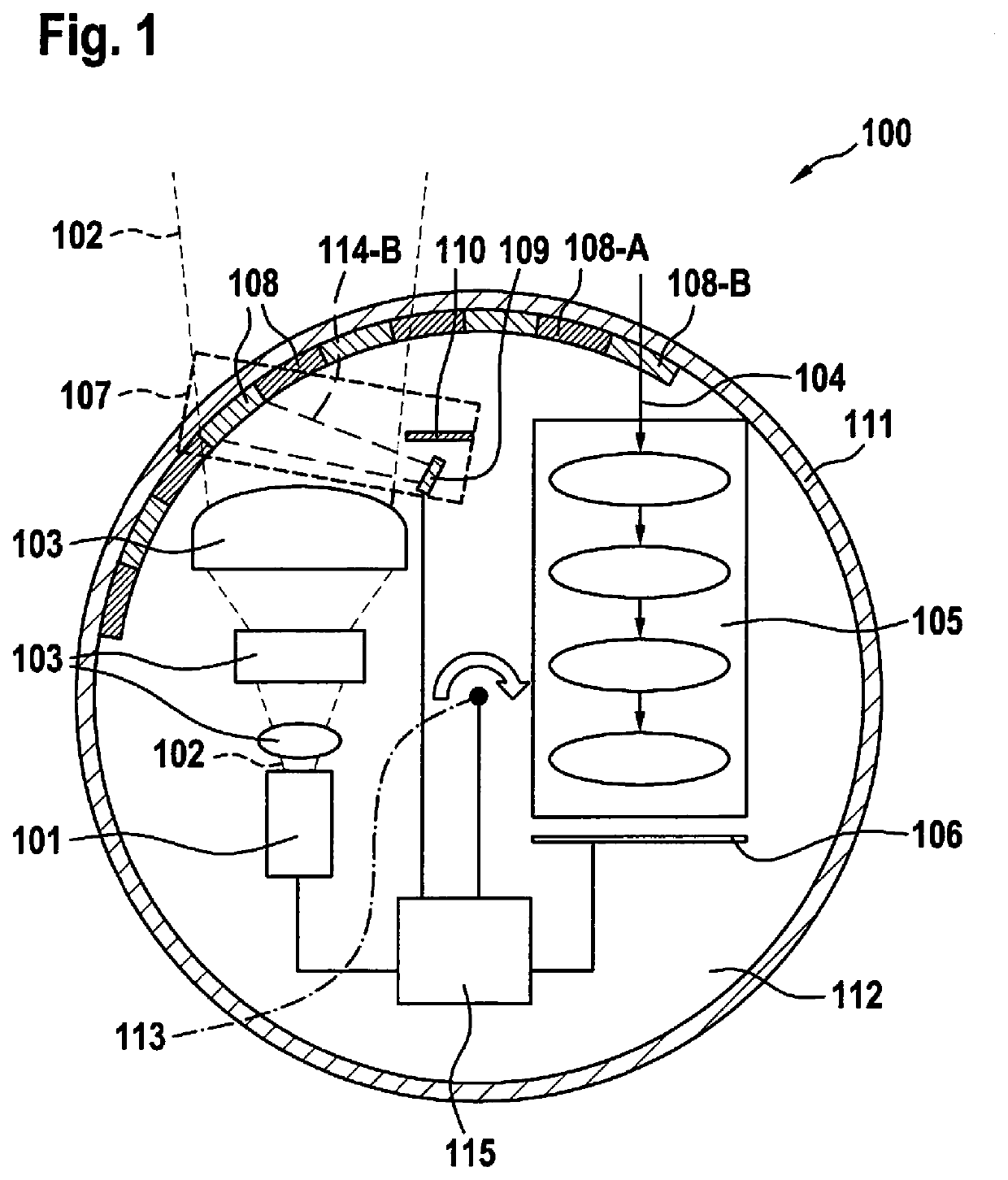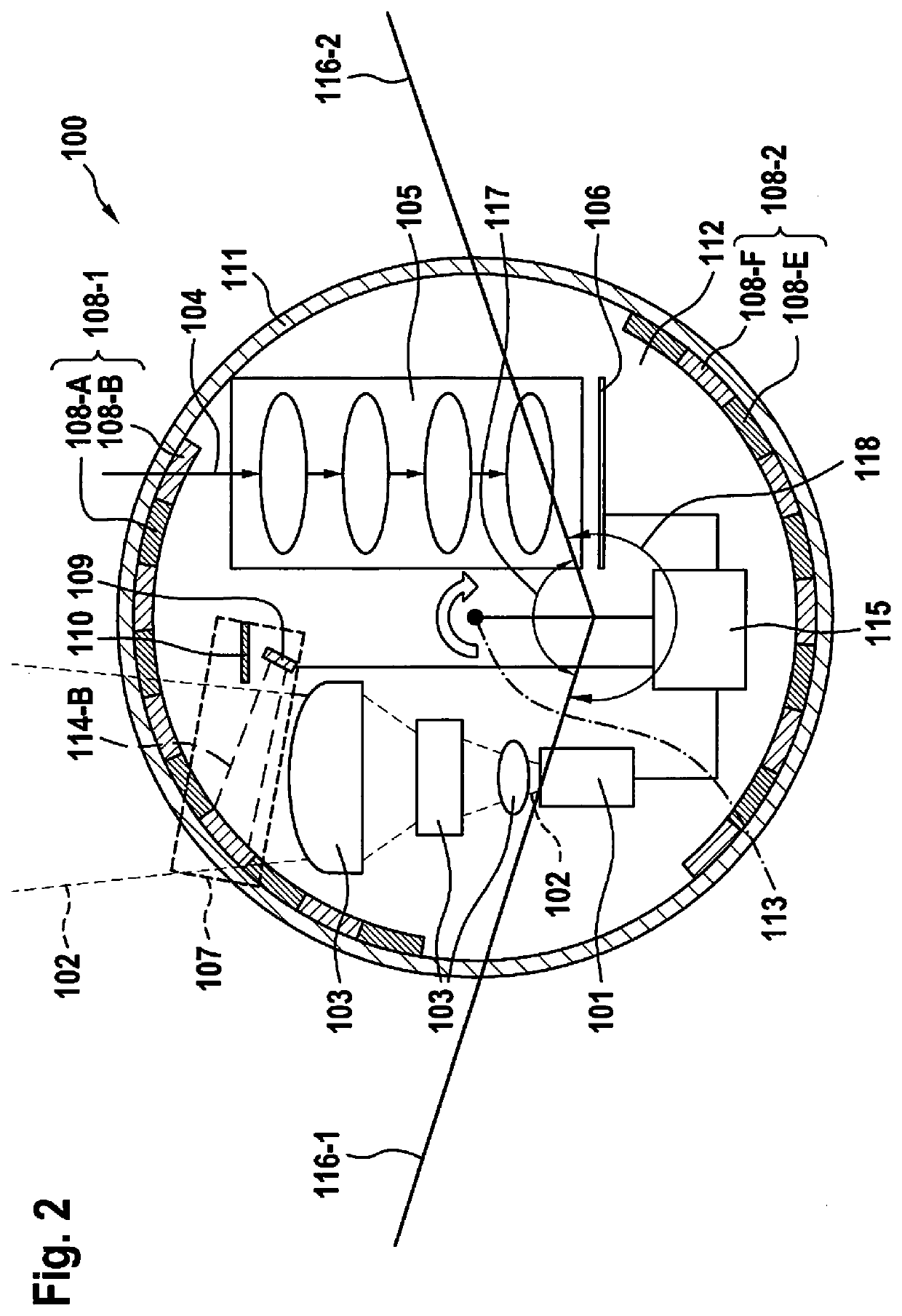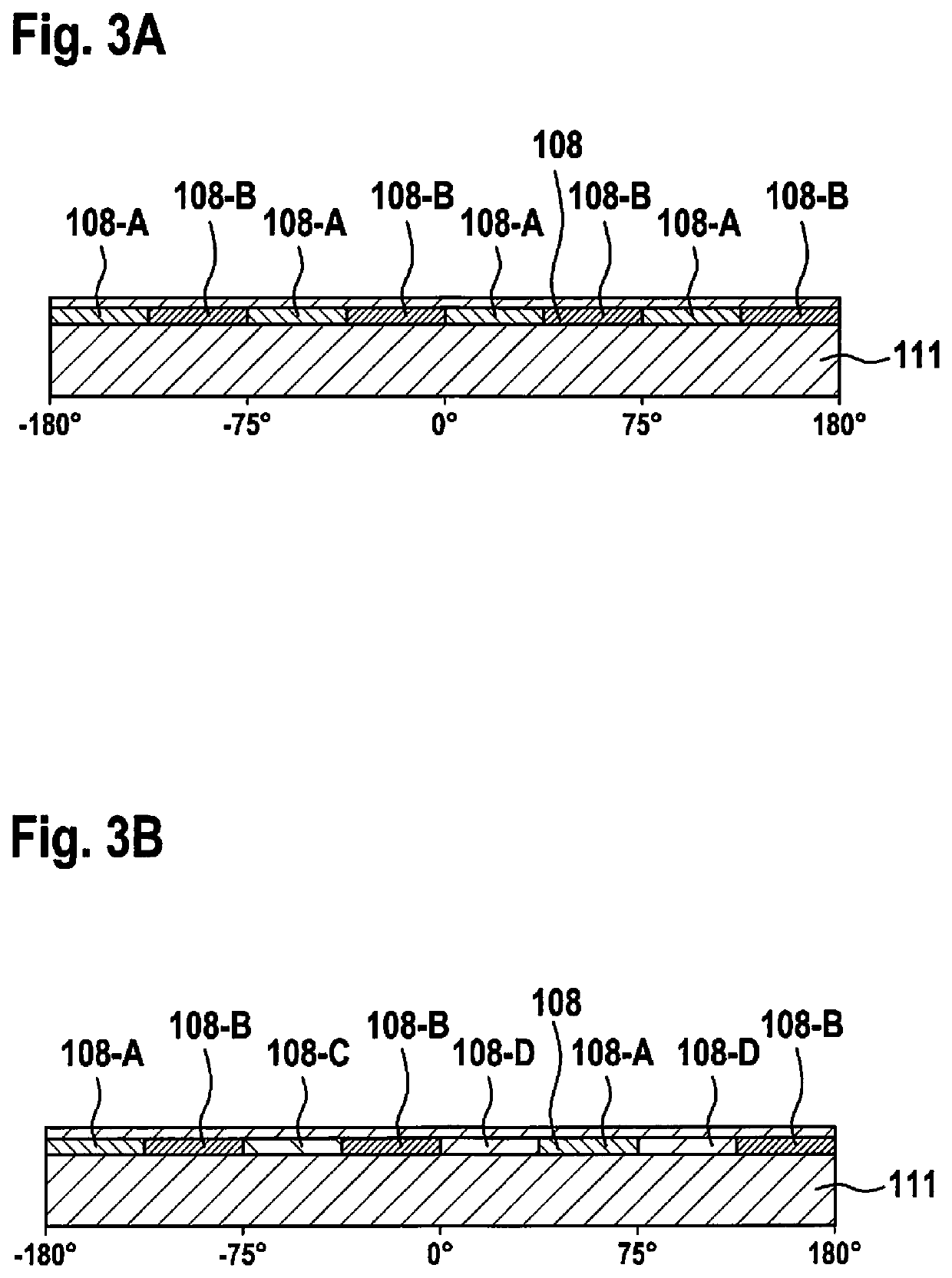[0011]An advantage of the present invention is that, with the aid of the described LIDAR device, at least one property of at least one component of the LIDAR device is efficiently ascertained. The installation space of the LIDAR device may be kept small in the process. The diffractive optical element may be composed of foil material. The diffractive optical element takes up little installation space and is flexible in its arrangement inside the LIDAR device. This results in greater freedom in the spatial arrangement of the diffractive optical element inside the LIDAR device. This results in greater freedom in the spatial arrangement of the at least one first diffraction area and of the at least one second diffraction area inside the LIDAR device.
[0012]In one advantageous embodiment of the present invention, it is provided that the at least first diffraction area is designed to divert and / or focus at least one first predefined portion of the emitted electromagnetic radiation to and / or on the second detector unit; and that the at least second diffraction area is designed to divert and / or focus at least one second predefined portion of the emitted electromagnetic radiation to and / or on the second detector unit.
[0013]The at least one first predefined portion in this case is, in particular, a function of the at least first diffraction efficiency. The at least second predefined portion is, in particular, a function of the at least second diffraction efficiency. The at least first diffraction area is, in particular, designed to divert the at least one first predefined portion to the second detector unit and / or to focus it with the aid of at least one first predefined diversion angle. The at least one first predefined diversion angle in this case is, in particular, a function of the orientation of the grating planes of the at least first diffraction area. In particular, the distance of the grating planes of the grating in a volume hologram is designed in such a way that it matches the wavelength of the emitted electromagnetic radiation. The at least second diffraction area is, in particular, designed to divert the at least one second predefined portion to the second detector unit with the aid of at least one second predefined diversion angle and / or to focus it. The at least one second predefined diversion angle in this case is a function, in particular, of the orientation of the grating planes of the at least second diffraction area. In particular, the distance of the grating planes of the grating in a volume hologram is designed in such a way that it matches the wavelength of the emitted electromagnetic radiation. The at least one first predefined diversion angle and the at least one second predefined diversion angle may have the same value. The at least one first predefined diversion angle and the at least one second predefined diversion angle may have different values.
[0014]An advantage of this embodiment is that the diffractive optical element is not subject to the limitations of the law of reflection. An optical function of the at least first diffraction area, for example, an angle by which incident light having a predefined wavelength is diverted, may be freely selected in the creation of the at least first diffraction area. An optical function of the at least second diffraction area, for example, an angle by which incident light having a predefined wavelength is diverted, may be freely selected in the creation of the at least second diffraction area. Additional optical functions such as, for example, a beam-focusing function, may be stored in a cost-effective and space-saving manner in the at least first diffraction area. Additional optical functions such as, for example, a beam-focusing function, may be stored in a cost-effective and space-saving manner in the at least second diffraction area.
[0015]In another advantageous embodiment of the present invention, it is provided that the at least one second detector unit is designed to detect the at least one first predefined portion of the emitted electromagnetic radiation as at least one first signal, and to detect the at least one second predefined portion of the emitted electromagnetic radiation as at least one second signal, and, based on the chronological progression of the at least one first signal and of the at least one second signal, to ascertain at least one property of at least one component of the LIDAR device. The signals detected by the second detector unit in this case are, in particular, a function of an angular velocity of the rotating deflection unit, and the size, the diffraction efficiency and / or the sequence of the first and second diffraction areas. The at least one first signal and the at least one second signal are, in particular, periodically and / or aperiodically modulated.
[0016]An advantage of this embodiment is that at least one property of at least one component of the LIDAR device may be efficiently ascertained. This increases the safety of the LIDAR device. It is possible to efficiently ascertain at least one time-dependent property of at least one component of the LIDAR device. It is possible to efficiently ascertain a property of at least one component of the LIDAR device that is variable over a time.
 Login to view more
Login to view more  Login to view more
Login to view more 


